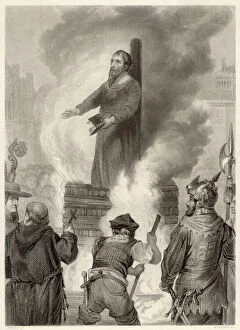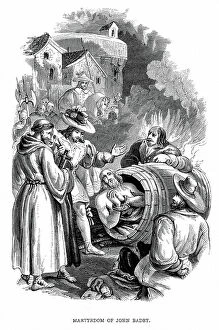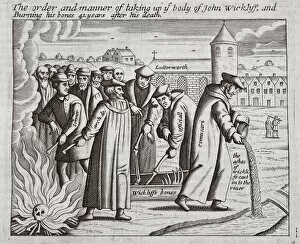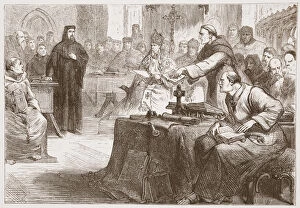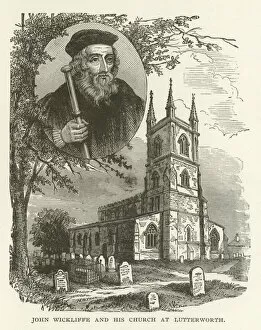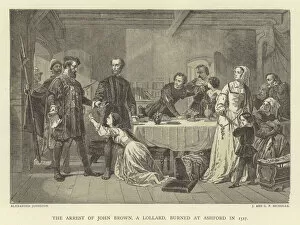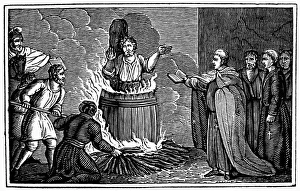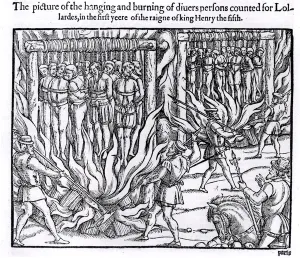"Lollard: A Historical Perspective on Religious Dissent and Persecution" The term "Lollard" refers to a movement of religious dissent that emerged in England during the 14th century. Led by influential figures such as John Wyclif, the Lollards challenged the authority of the Catholic Church and sought to bring about reforms based on their interpretation of scripture. John Wyclif, often considered the father of Lollardy, was an Oxford theologian who criticized various aspects of church doctrine and practices. He believed in translating the Bible into English so that common people could have direct access to its teachings. To spread these ideas, he sent out Lollard preachers like William Sawtre to share Bible stories with ordinary folks. However, this defiance did not go unnoticed or unpunished. The authorities viewed Lollardy as heresy and unleashed brutal measures against its followers. Sir John Oldcastle, one prominent Lollard leader, was even depicted in an engraving from "A Catalogue of Royal and Noble Authors, " highlighting his role within this controversial movement. Acts of persecution were rampant during this period; individuals counted as Lollards faced hanging and burning at the hands of King Henry V's regime. Illustrations from works like John Foxe's "Acts and Monuments" depict chilling scenes depicting executions carried out against those deemed heretics. One particularly gruesome account is that of William Sawtre's execution attributed to Arnold - an event captured through a lithograph by W. French - showcasing how dissenters were dealt with harshly for challenging established religious norms. Furthermore, images portraying prisoners confined within cramped quarters in places like the infamous Lollards Tower emphasize just how dire conditions were for those accused under suspicion of being partakers in this unorthodox belief system. The persecution reached its peak when individuals like John Badby suffered horrific deaths through burning at stake – their fate described vividly in John Foxe's "Acts and Monuments.

